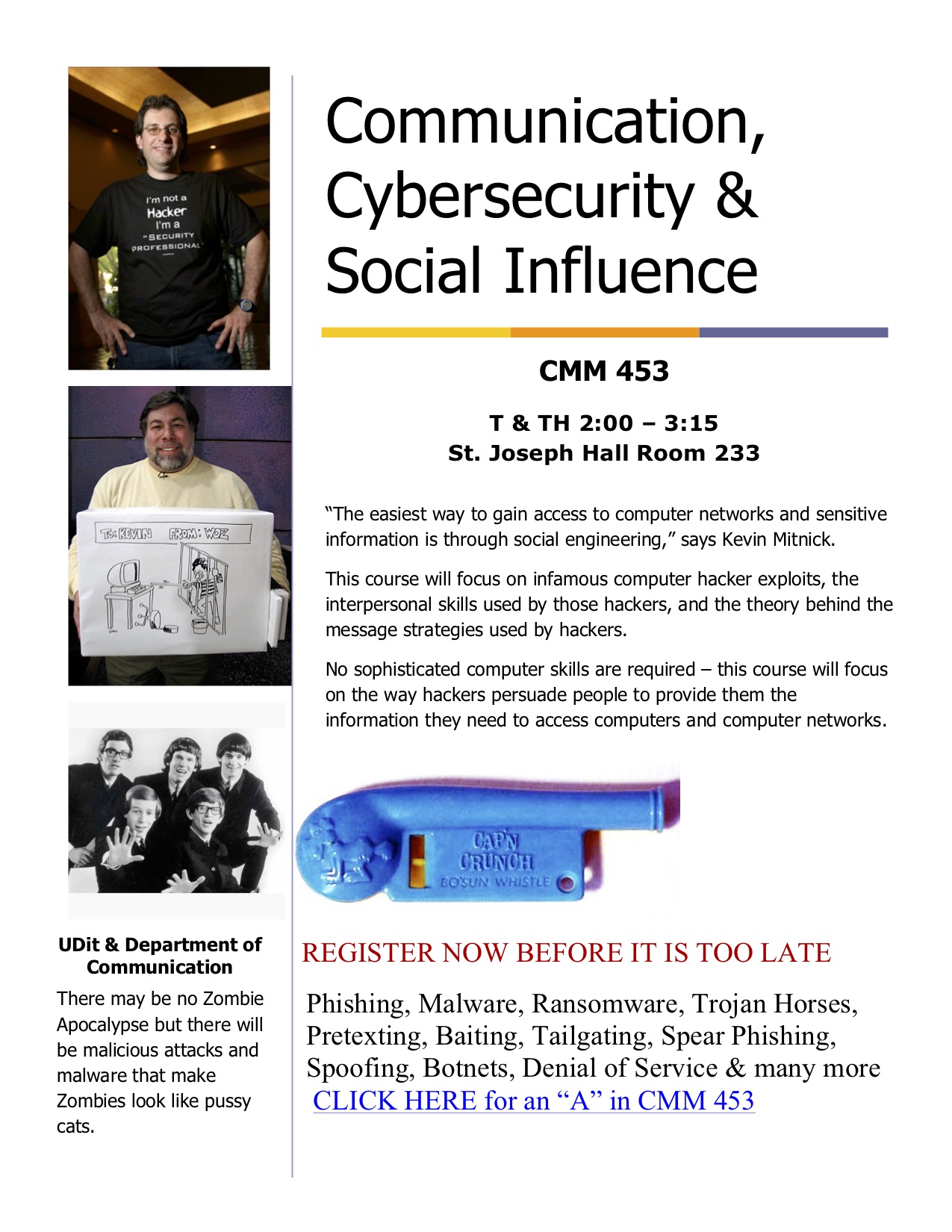Center for Cybersecurity & Data Intelligence

Part 2: Comm Prof on Cybersecurity Training
By James Robinson, Ph.D., Professor, Dept. of Communication
If you missed part one of this series, read it here.
Sending, receiving, processing, and decoding messages requires a lot of mental effort. Think about it. Even the smartest people can be bad at communicating.
The best communicators know a lot about their message topic and even more about their audience. Without considering the audience, even the simplest message strategies fail.
Let me explain... When I proposed to teach a course in communication and cybersecurity, I was asked to create a promotional flyer to hang around campus. With so much creative freedom, I got carried away. I forgot my intended audience (young, hip college students) and sprinkled in jokes that only IT experts or middle-aged men would enjoy.
 In case you're confused like my students... Here are my references explained:
In case you're confused like my students... Here are my references explained:
- 1. Infamous hacker, Kevin Mitnick, wearing an "I am not a hacker" t-shirt
- 2. Steve Wozniak, co-founder of Apple computers, holding a cartoon of Kevin Mitnick in jail
- 3. A zombie apocalypse featuring The Zombies, an English rock band formed in 1958
- 4. The Cap’n Crunch whistle, alluding to John Draper, an early 1970’s hacker who used those whistles to trick payphones so that he could make free calls
- Perhaps my flyer would’ve persuaded sixty-year-old college students to take a class in cybersecurity. But, alas, my audience averaged 20-years-old and did not understand a single joke or reference that I had carefully planted to gain their interest.
Proud of my artistry and wanting feedback, I showed the class my flyer and asked what they thought. They told me that they didn’t understand the graphics or jokes. They didn’t even laugh after I explained them.
Somewhat saddened by my failed effort, I asked the students a final question: “Did anyone decide to take this class because of the flyer?” Not a single student had seen the flyer before that day in class. Not only had I failed to adapt my message to the audience, but I had also failed to expose them to the message.
To summarize my sad story: This message creation stuff is complicated… Communicators must carefully design their messages while keeping their audiences in mind.
Also, college students need a refresher in classic rock bands.
The third and final part of this series explores psychology's role in crafting messages.
